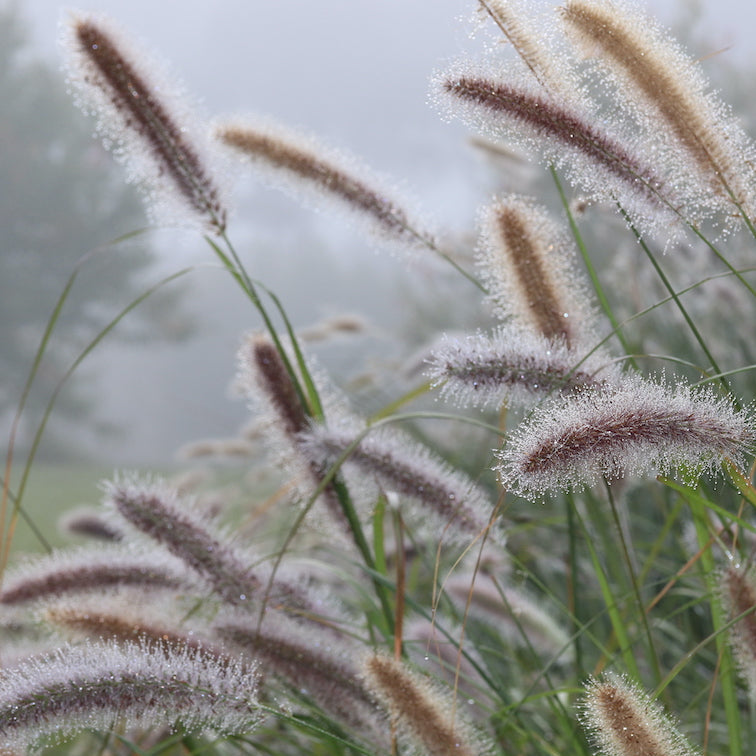Pennisetums
Totally inspired on two accounts.
Firstly, after what seems to be the longest winter ever, a new spring is dawning. The effort made on cold winter days spent in the garden is finally paying off. The grasses are returning after a hard winter cut back. The new purchase of Quercus dentata (Daimyo Oak) has sprung into leaf. And… the Amsonia tabernaemontana which were transplanted from the nursery site are ‘popping’ out of the ground. Everyday it seems something new is happening and there is a kick in my step despite the fact we still need rain!
Secondly, I received my September copy of Gardens Illustrated from the UK and on page 65 there is an article on Pennisetums which is very exciting. Even the heading under the title has be drawn in with something I did not know….in latin ‘Penna’ means feather, and ‘Seta’ means bristle. Hence Pennisetum - meaning feather bristle, which is obviously referring to the inflorescence.
My experience of Pennisetums in contrast to this article has been rather mixed.
Pennisetum setaceum quickly proved itself to be heavily promiscuous and would self seed in abundance. Hence being declared a noxious weed by many councils.
Pennisetum alopecuroides ‘Hameln’ is a good variety that behaved itself but perhaps lacked a little in garden appeal.
In contrast Pennisetum ‘Moudry’ was incredibly appealing with its black plumes but unfortunately turned into a garden thug by dominating surrounding plants with progeny.
Then there was the release of Pennisetum x advena rubrum (pictured below) which was a big hit due to its flashy foliage, foxtail plumes and general aesthetics. This initial frenzy on its first release has calmed to where this appealing Pennisetum has found its niche.

Pennisetum ‘Nafray’ has been successful on its appeal as a native grass that doesn’t produce self seeding concerns. Planted in drifts and blowing in a breeze it has really eye-catching appeal.
We have grown Pennisetum ‘Red Buttons’ for the last few years with great success. It handles the frost, the heat and the drought. With masses of ‘red’ plumes in early spring and shorter stature it has a great garden appeal….and it has never self seeded.
Pictured above: Pennisetum 'Red Buttons'
Pennisetum ‘Tall Tails’ is a much newer addition to our grass portfolio. We are very impressed with its taller nature and weeping plumes which do look like tall upstanding tails (pictured below). At 1.5 metres in height it towers above other Pennisetums. Extremely tough and at this point no signs or self seeding.

The Gardens Illustrated article offers twelve varieties of Pennisetum. The mind boggles with possibility of their future garden potential here in Australia.
If you are going to the Kariong Plant Lover’s Fair this weekend (September 22-23) we will be there with a range of ornamental grasses.
See you there,
Rob





Leave a comment